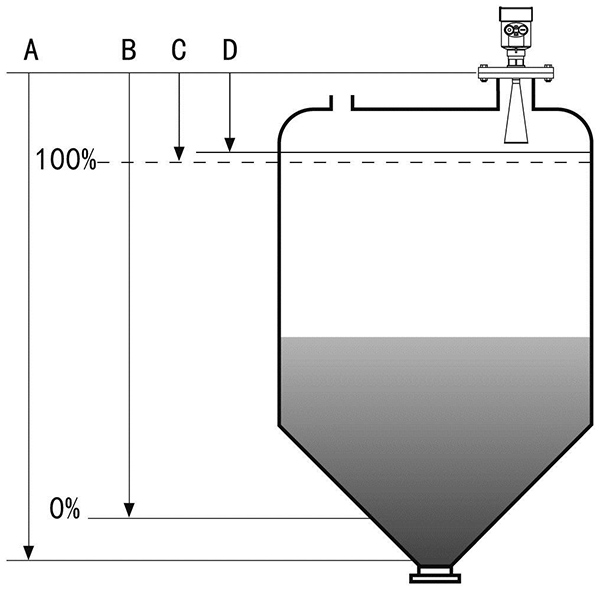1. High-frequency radar level meter refers to the radar level meter above 26GHz, which has many advantages such as high frequency, short wavelength, small beam angle, and high accuracy.
2. When the radar level meter is measuring the level of solid bulk materials, it will be calculated mainly based on the reflection of the radar wave on the material, the intensity of the material emission is proportional to the amount of material and inversely proportional to the radar wavelength, the majority of bulk materials on the market are mostly less than 50mm in diameter, while the high-frequency radar level meter has a small beam angle and concentrated energy, which enhances the return capability and at the same time can smoothly avoid interfering objects. Therefore it is the best choice for measuring bulk material level.

3. In the application of small storage tanks, because the 6GHz radar antenna is long, mostly 300mm-400mm, which will lead to a blind area of about 600mm, and the wave number angle of 6GHz radar is large, in the process of measurement will produce multipath reflection; resulting in inaccurate measurement results.
The 26 GHz high-frequency radar is more suitable for measuring small storage tanks because of its high frequency, short antenna, and small wave number angle.
4. Facing the harsh field environment, it is easy to produce dirt. A high-frequency radar level meter has a small antenna, which is easier to clean and maintain, and will not be affected by the environment’s electromagnetic waves, ensuring the accuracy of the data. The 6GHz radar, on the other hand, cannot do this.
